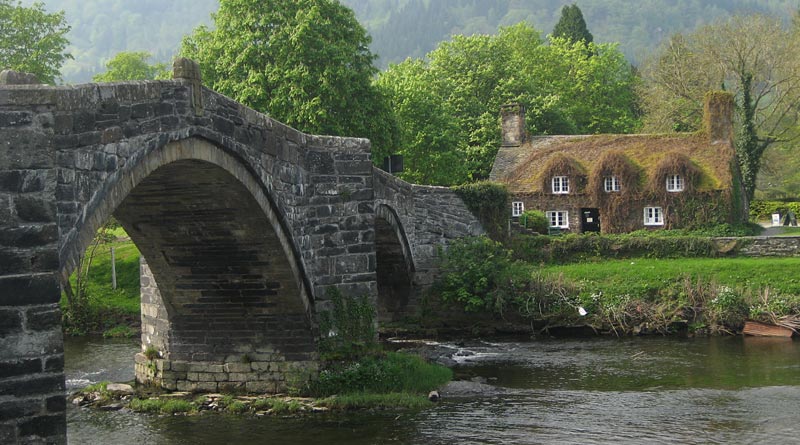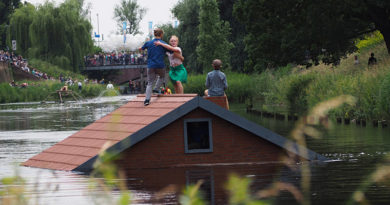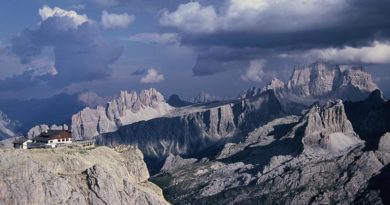North Wales in 48-and-a-bit hours
Tuesday, 1.40pm: Surprisingly, the train from Cardiff, in South Wales, to Conwy, in North Wales, loops through England for much of the four-hour trip. At first North Wales looks to be an endless row of caravans and chip shops squeezed along a bleak shore, but my introduction to Conwy is promising. The train isn’t scheduled to stop until the next town, but the conductor arranges a halt just for me. The platform is just inside the medieval city walls.
1.50pm: I find a bed for the night at the Castle Hotel, a delightful former coach inn on the cobbled main street and two minutes’ walk from the quay.

2.05pm: Medieval city walls are one of my top travel fetishes, so I waste no time exploring Conwy’s. Built in 1285-87, Conwy’s walls are 1.3km long with 22 towers and three gateways. The walls have been breached in only one place to allow traffic through, and you can walk almost all the way around the battlements. It’s free, it’s fabulous, and I have the wall-top walkway practically to myself.
As well as great views of the city and Conwy Bay, the height of the walls – level with chimney tops and second-floor windows – means you get some fascinating glimpses of everyday domestic life. I also notice a peculiarly British phenomenon – at the first hint of sunshine, young British men shed their shirts en masse and reveal blinding white expanses of man-flesh.
3pm: The city walls lead me to Conwy Castle, built by the English King Edward I in 1283-87 to show the Welsh who was boss. Up to 1500 workers at a time built the castle at a cost of £15,000 (about £45 million in today’s money); when it was finished King Ed had it whitewashed just to make sure no one could miss the castle or its message. While little remains inside the castle, every tower is intact and I resolve to climb every last one. Whew.
3.30pm: I catch a bus to nearby Llandudno, a classic Victorian seaside town with grand buildings curving around a stony beach and kids up to their ankles in the sea shrieking with cold.
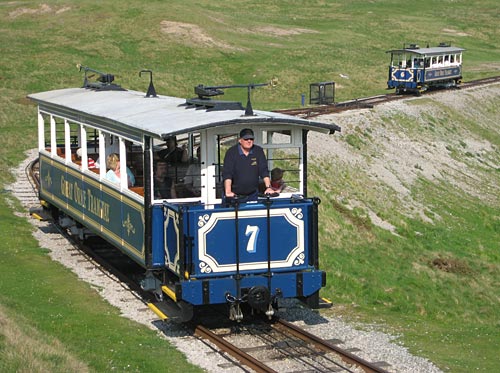
4pm: I take a charmingly old-fashioned tram up the Great Orme, a rounded limestone headland at one end of Llandudno. It’s really a funicular railway rather than a tram – as one carriage descends, its weight pulls another up the hill. At the top I find all the cheesy attractions you’d expect at a British holiday spot, but the view across the Irish Sea is magnificent. I wander back down the Orme through a limestone landscape of sinkholes and wildflowers.
6pm: Back at the hotel for dinner: Conwy lamb parcel wrapped in Carmarthenshire ham. Yum.
9.30pm: After another wander around the walls, it’s time for a pint of Cardiff-brewed Brains Special Ale at a pub on the quay. Conwy could easily be a trite tourist town, but the other folk enjoying the warm evening outside are locals. The working fishing boats and stacks of lobster pots also add authenticity.
If you ever find yourself in North Wales, it’d be a crime to miss Conwy.
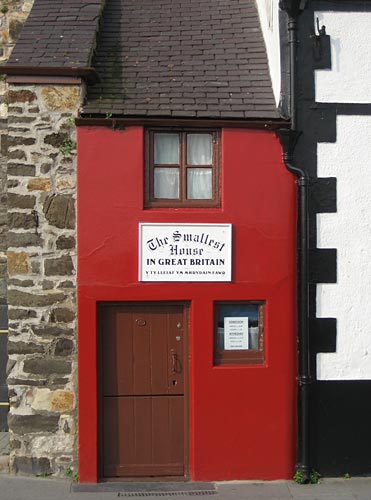
Wednesday, 9am: I take a last look around Conwy and check out what claims to be Britain’s smallest house. At two storeys high and just two metres wide, its last resident – a six-foot-three fisherman – had to sleep with his feet sticking out a window, apparently.
9.30am: My guide, Dave Wagstaff, picks me up from the hotel. It turns out Dave is not just a walking encyclopedia of all things Welsh, but a keen hiker as well. It promises to be a good few days. We stop at the ruins of Dolwyddelan castle – Wales boasts more than 600 castles – and over the Crimea Pass into Snowdonia, home to the tallest mountains in England and Wales. The moment we cross the pass the landscape changes from lush green pasture to raw hills of bare, broken rock and vast grey piles of slate left by centuries of mining.
12 noon: We arrive in the surreal slate-mining town of Blaenau Ffestinog. It’s in the middle of Snowdonia National Park but it’s also surrounded by mountains of mine waste, making an extraordinary, other-worldly landscape. With seconds to spare Dave gets me a seat on the Ffestinog narrow gauge steam railway, built in 1836 to carry slate to the docks at Porthmadog, 20km away. Soon I’m wrapped in the smell of coal smoke in a creaking, shuddering carriage as the train trundles through beech forest and skirts valley slopes high above a river. If you’re a fan of unusual little trains, you’ll think North Wales is heaven. This railway was abandoned in 1946 but rebuilt by volunteers in the 1980s.

1.30pm: Dave is waiting for me at Porthmadog for the short drive to Portmeirion. This monstrous folly, Italianate fantasy village or refuge for endangered buildings – depending on your point of view – has long been on my must-see list, and it doesn’t disappoint. The brainchild of eccentric genius Clough Williams-Ellis, Portmeirion is a private village of pastel houses, colonnades, bell towers and piazzas perched on a wooded peninsula. It looks like it’s warped in from Italy, and I can’t get enough of its quirky details and pretty vistas.
4.30pm: It’s ridiculously late to start a hike, but it’s such a perfect afternoon we decide to have a crack at Mt Snowdon. At 1085m, it’s not high by New Zealand standards – but it is the highest mountain in England and Wales and it’s surprisingly rugged. We start walking at the Pen-y-Pass trailhead, following the Miner’s Path in the footsteps of copper miners a century ago. We pass the ruins of an ore crushing mill and cross a tarn on a causeway built by miners, imagining how tough it would be climbing a mountain every morning even before you start work.
We get to what looks like easy striking distance of the summit, but Dave does a quick calculation and decides we need to turn back or we’ll still be walking in the dark. I’m gutted but vow to come back for another try.
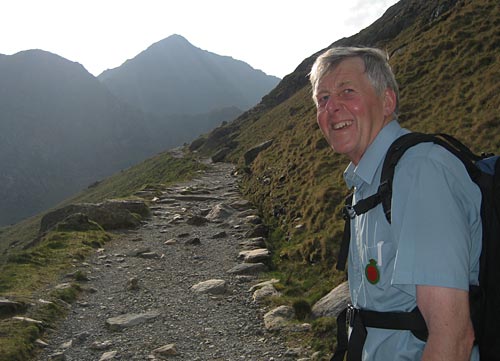
8pm: After descending via the stonier, steeper Pig Track it’s only a short drive to the Pen-y-Gwrd Hotel, training base for the 1953 Everest expedition. Team members – including our own Sir Edmund Hillary – honed their climbing techniques on Mt Snowdon and, so the barman tells us, tested their oxygen apparatus while clambering up stacks of chairs in the hotel dining room.
The hotel guests are tucking into dinner, giving us a chance to poke around and sink a well-earned Snowdonia ale. A display case in the “smoke room” is packed with memorabilia from the 1953 expedition, including the rope used to hitch Hillary and Tenzing together, prayer flags and an oxygen tank. Another room has Sir Ed’s signature scrawled on the ceiling.
9pm: Dinner in the upmarket hiking resort of Betws-y-Coed, and someone’s plucking on a harp in the fancy dining room at the Royal Oak Hotel. Maybe we should have changed out of our hiking clothes first…
Thursday, 8.30am: Head off again with Dave, this time over the Llanberis Pass and into a broad glacial valley, rising steeply on either side to rows of 1000m peaks.
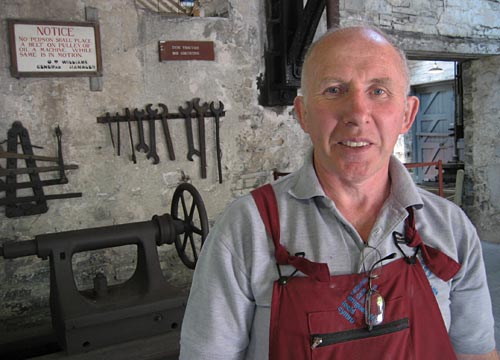
9.45am: A gritty quarry town until the 1960s, Llanberis is now a busy hiking village and the starting point for the mountain railway that grinds all the way to top of Snowdon. I’m amazed by the strength of the Welsh language here – everyone, even the toughs hanging around on street corners in hoodies, speaks Welsh first and English second.
Beneath a mountain cut by slate quarries into a series of giant steps, the Welsh Slate museum looks as forbidding as a Victorian prison. Maybe that’s because it was a slate factory modelled on forts in British India. We latch onto a French school group and watch as a master slate splitter shows how a few skilful taps with a chisel splits a chunk of rock into perfect tiles. His humour is lost on the school kids, but not the heart he chips out of slate for one of the girls.
12.30pm: Dave wants to show me an ancient corner of Anglesey Island, his stamping ground in the northwestern corner of Wales. We cross the world’s first suspension bridge – the 190m Menai Bridge, built in 1826 above a swiftly flowing strait – and after a ten-minute walk through fields sprinkled with sheep we find one of oldest traces of human settlement in Wales.
The 5000-year-old Bryn Celli Ddu was originally a Neolithic “henge”, a stone circle for religious rituals, later converted into a burial chamber. At the summer solstice the sun lights up the inner chamber; cracks are jammed with candle stubs, crystals and New Age offerings.

12.45pm: We arrive in Llanfairpwllgwyngyllgogerychwyrndrobwllllantysiliogogogoch. The longest place name in Britain was fabricated in the 1880s in the hope of attracting tourists; judging by the buses parked outside the information centre, it worked a treat. The name translates as “St Mary’s Church in the hollow of white hazel near a rapid whirlpool and the church of St Tysilio near the red cave”.
12.47pm: We leave, having visited all the village’s attractions.
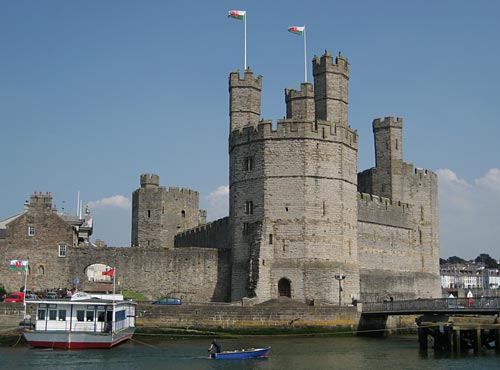
1.30pm: Caernarfon isn’t an especially attractive town, and it doesn’t help that half the centre is dug up and the waterfront is blighted by modern buildings – but it does have another huge 13th century castle.
We tuck into an excellent lunch and a few ales at the Black Boy Inn, a pub built in 1522, well before political correctness was invented. Inside it’s a warren of tiny rooms with blackened beams you have to duck under. We elect to sit outside in glorious sunshine.
2.20pm: I fight off a case of castle fatigue and explore Caernarfon Castle – built, like Conwy, by Edward I. It was the biggest castle in his “Iron Ring” of fortresses, a blatant show of might that was never completed.
4pm: The last stop on our tour of North Wales is the Llyn Peninsula – a stony, spooky finger of land jutting into the Irish Sea, dotted with 6th century pilgrims’ churches. We climb a bare hill to Tre’r Ceiri (Town of the Giants) – a fortress with the remains of 150 round stone huts encircled by a dry stone wall that was once 4m high.
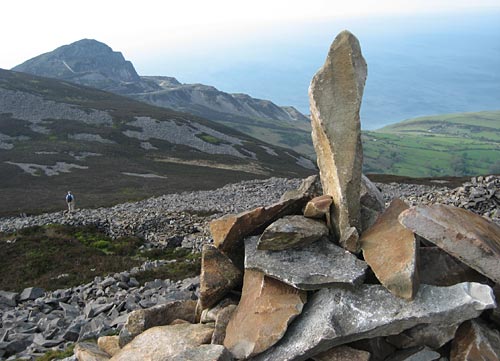
The Celts started building the hilltop fort just before the Roman invasion of 78AD, and it was abandoned three centuries later. It’s a stiff 15 minute hike to the top, but the views of the peninsula’s trio of bald, raw hills, the pretty villages below and the island of Anglesea in the distance make it well worth the effort.
6.10pm: After all that walking and so many millennia of history to soak up, I need a beer. A short drive and a beach walk later we’re at Porthdinllaen, a village of at most a dozen whitewashed fishermen’s cottages snuggled into a cliff and accessible only on foot. In the middle of the village is the pub Ty Coch (Red House), which has been voted the best place in Britain to have a beer. It’s easy to see why; alas, the pub is closed.
Dave quizzes a fisherman who says the pub opens only when the owners feel like it. A parched English couple, who’ve walked further than we have, are fuming at the Welsh lack of business zeal. But quietly I applaud them: Who’d want to be indoors doing business on such a glorious afternoon?
In 2008 I had the good fortune to win a journalism fellowship sponsored by the British High Commission and Air New Zealand.
The prize included a month-long stay in the Welsh capital, where I sat in on classes of the international diploma in journalism at Cardiff University, visited newsrooms, studied the Welsh language, and poked around a few of the hundreds of castles that dot the Welsh landscape.
But the highlight was a few days exploring North Wales, thanks to the good folk at Croeso Cymru/Visit Wales who sorted me out with transport, accommodation and even a guide for a few days.

